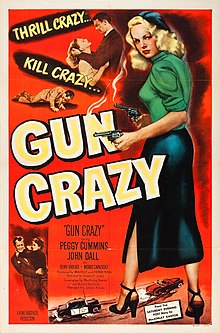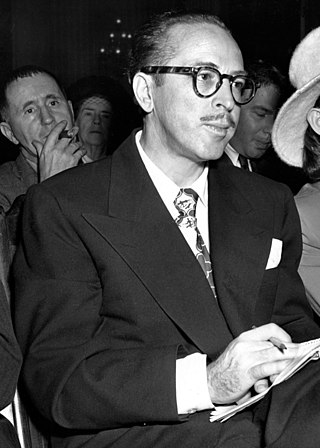
James Dalton Trumbo was an American screenwriter who scripted many award-winning films, including Roman Holiday (1953), Exodus, Spartacus, and Thirty Seconds Over Tokyo (1944). One of the Hollywood Ten, he refused to testify before the House Un-American Activities Committee (HUAC) in 1947 during the committee's investigation of alleged Communist influences in the motion picture industry.
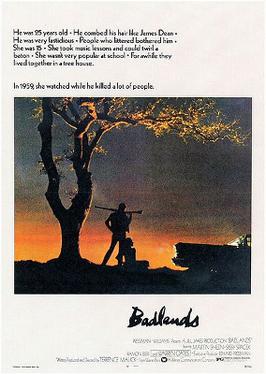
Badlands is a 1973 American neo-noir period crime drama film written, produced and directed by Terrence Malick, in his directorial debut. The film stars Martin Sheen and Sissy Spacek, and follows Holly Sargis (Spacek), a 15-year old who goes on a killing spree with her partner, Kit Carruthers (Sheen). The film also stars Warren Oates and Ramon Bieri. While the story is fictional, it is loosely based on the real-life murder spree of Charles Starkweather and his girlfriend, Caril Ann Fugate, in 1958.

Bonnie and Clyde is a 1967 American biographical neo-noir crime film directed by Arthur Penn and starring Warren Beatty and Faye Dunaway as the title characters Clyde Barrow and Bonnie Parker. The film also features Michael J. Pollard, Gene Hackman, and Estelle Parsons. The screenplay is by David Newman and Robert Benton. Robert Towne and Beatty provided uncredited contributions to the script; Beatty produced the film. The music is by Charles Strouse.
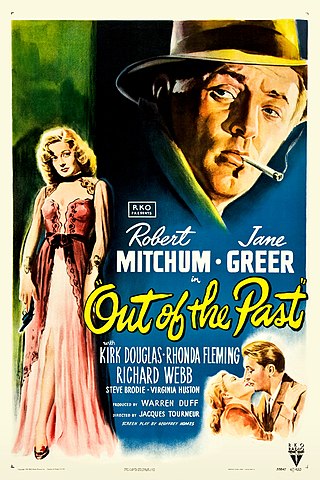
Out of the Past is a 1947 American film noir directed by Jacques Tourneur and starring Robert Mitchum, Jane Greer, and Kirk Douglas. The film was adapted by Daniel Mainwaring from his 1946 novel Build My Gallows High, with uncredited revisions by Frank Fenton and James M. Cain.
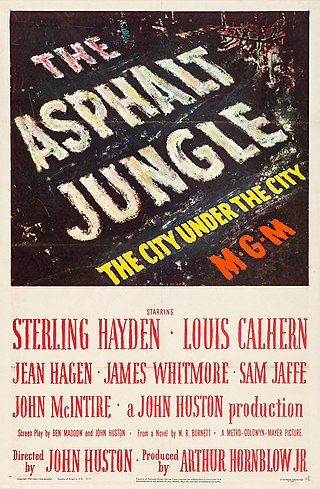
The Asphalt Jungle is a 1950 American heist film noir directed and co-written by John Huston, and starring Sterling Hayden and Louis Calhern, with Jean Hagen, James Whitmore, Sam Jaffe, John McIntire, and Marilyn Monroe in one of her earliest roles. Based on the 1949 novel of the same name by W. R. Burnett, it tells the story of a jewel robbery in a Midwestern city.
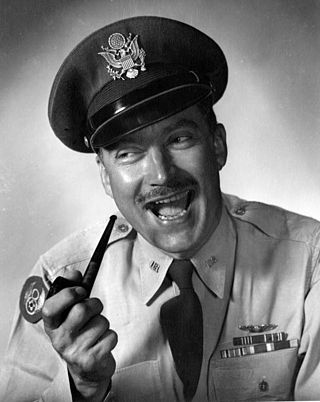
MacKinlay Kantor, born Benjamin McKinlay Kantor, was an American journalist, novelist and screenwriter. He wrote more than 30 novels, several set during the American Civil War, and was awarded the Pulitzer Prize for Fiction in 1956 for his 1955 novel, Andersonville. He also wrote the novel Gettysburg, set during the Civil War.

Joseph H. Lewis was an American B-movie film director whose stylish flourishes came to be appreciated by auteur theory-espousing film critics in the years following his retirement in 1966. In a 30-year directorial career, he directed numerous low-budget westerns, action pictures, musicals, adventures, and thrillers. Today he is remembered for mysteries and film noir stories: My Name Is Julia Ross (1945) and So Dark the Night (1946) as well as his most highly regarded features, 1950's Gun Crazy, which spotlighted a desperate young couple who embark on a deadly crime spree, and the 1955 film noir The Big Combo, with its stunning cinematography by John Alton.
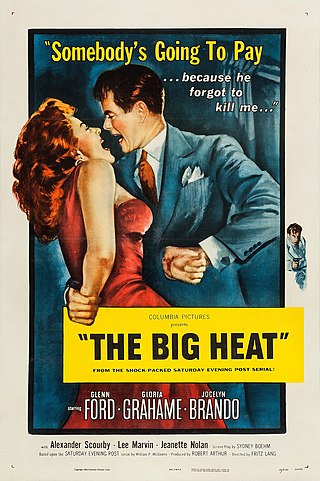
The Big Heat is a 1953 American film noir crime film directed by Fritz Lang starring Glenn Ford, Gloria Grahame, and Jocelyn Brando about a cop who takes on the crime syndicate that controls his city.

The Big Combo is a 1955 American film noir crime film directed by Joseph H. Lewis, written by Philip Yordan and photographed by cinematographer John Alton, with music by David Raksin. The film stars Cornel Wilde, Richard Conte and Brian Donlevy, as well as Jean Wallace, who was Wilde's wife at the time. The supporting cast features Lee Van Cleef, Earl Holliman and the final screen appearance of actress Helen Walker.

Peggy Cummins was an Irish actress, born in Wales, who is best known for her performance in Joseph H. Lewis's Gun Crazy (1950), playing a trigger-happyfemme fatale, who robs banks with her lover. In 2020, she was listed at number 16 on The Irish Times list of Ireland's greatest film actors.
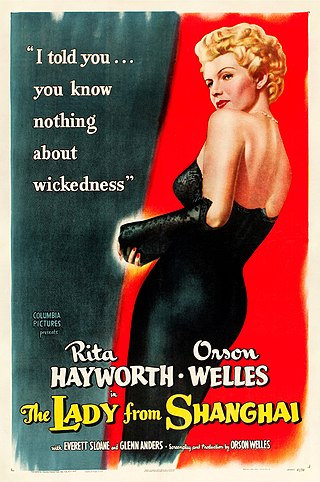
The Lady from Shanghai is a 1947 American film noir produced and directed by Orson Welles that stars Rita Hayworth, Welles and Everett Sloane. Welles's screenplay is based on the novel If I Die Before I Wake by Sherwood King.

Raw Deal is a 1948 American film noir crime film directed by Anthony Mann and starring Dennis O'Keefe, Claire Trevor and Marsha Hunt. It was shot by cinematographer John Alton with sets designed by the art director Edward L. Ilou. An independent production by Edward Small, it was distributed by Eagle-Lion Films.

The Prowler is a 1951 American film noir thriller film directed by Joseph Losey that stars Van Heflin and Evelyn Keyes. The film was produced by Sam Spiegel and was written by Dalton Trumbo. Because Trumbo was blacklisted at the time, the screenplay was credited to his friend, screenwriter Hugo Butler, as a front.

To the Nines is the ninth novel by Janet Evanovich featuring the bounty hunter Stephanie Plum. Written in 2003, it's the second book in a row that doesn't revolve around a criminal bond, and the first to take Stephanie out of New Jersey and into the neon glitz of Las Vegas.

Red Light is a 1949 American film noir crime film directed and produced by Roy Del Ruth, starring George Raft and Virginia Mayo, and based on the story "This Guy Gideon" by Don "Red" Barry, featuring strong religious overtones.
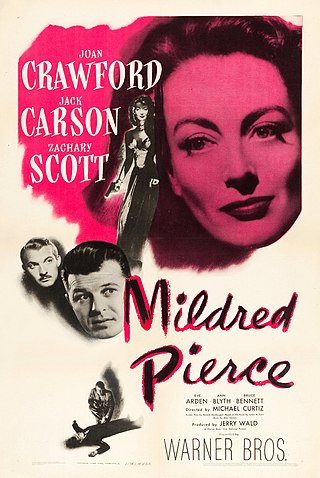
Mildred Pierce is a 1945 American melodrama/film noir directed by Michael Curtiz and starring Joan Crawford, Jack Carson, and Zachary Scott, also featuring Eve Arden, Ann Blyth, and Bruce Bennett. Based on the 1941 novel by James M. Cain, this was Crawford's first starring role for Warner Bros., after leaving Metro-Goldwyn-Mayer, and she won the Academy Award for Best Actress. In 1996, Mildred Pierce was deemed "culturally, historically, or aesthetically significant" and selected for preservation in the United States Library of Congress National Film Registry.

The Last Sunset is a 1961 American Western film directed by Robert Aldrich and starring Rock Hudson, Kirk Douglas, and Dorothy Malone.

White Heat is a 1949 American film noir directed by Raoul Walsh and starring James Cagney, Virginia Mayo and Edmond O'Brien.

Dr. O'Dowd is a 1940 British drama film directed by Herbert Mason, produced by Sam Sax for Warner Bros and starring Shaun Glenville, Peggy Cummins, Felix Aylmer and Irene Handl. Set in Ireland, it focuses on Marius O'Dowd, an Irish doctor, who works to restore his relationship with his son after his daughter-in-law dies under O'Dowd's care. The film was the onscreen debut for Peggy Cummins, who was only thirteen at the time. It was well received by critics, and Cummins' role was the subject of particular praise. The film is currently missing from the BFI National Archive, and is listed as one of the British Film Institute's "75 Most Wanted" lost films.

Terror in a Texas Town is a 1958 American Western film directed by Joseph H. Lewis and starring Sterling Hayden, Nedrick Young, and Sebastian Cabot.
